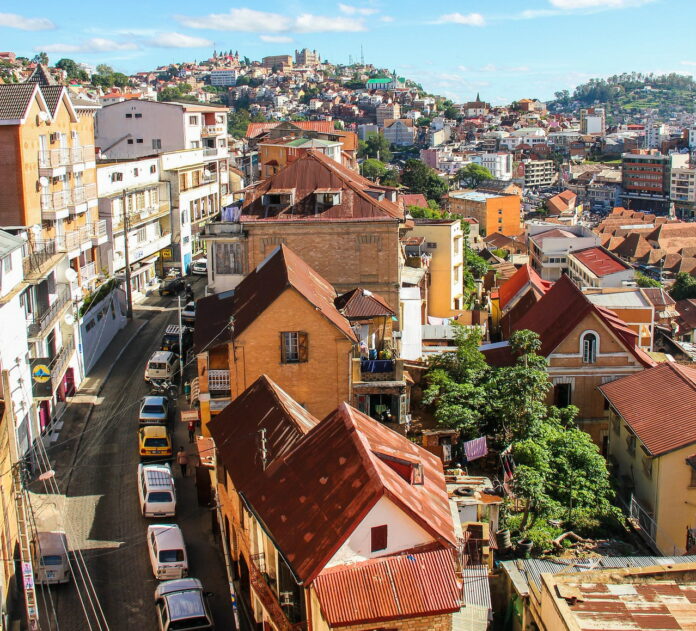Perhaps everyone remembers the cheerful children’s cartoon about the animals from the New York zoo who decided to return to the wild. Thanks to their adventures, the whole world once again heard about the colorful tropical island of Madagascar. However, this idealistic picture has little in common with reality, except for perhaps some landscape sketches.
Many millions of years ago, this piece of land broke away from hot Africa. Since then, this colorful land has developed as a separate ecosystem, consisting of unique endemic representatives of flora and fauna found nowhere else on earth. Sandy beaches, coral reefs along the coast, the coolness of the deciduous forest, the restless nature of the temporarily dormant volcano, and the gentle fertile plains closer to the center.
The natural beauty is truly the undeniable wealth and pride of this place. But the island’s population is practically impoverished. The average family here has no more than $1 a day for food and clothing, not to mention other basic needs. Thus, the island in the Indian Ocean can be considered somewhat paradoxical: hell for the locals and paradise for tourists.
Interesting Facts About Madagascar:
- The total area of Madagascar is about 587,000 square kilometers. It is considered the fourth largest island on our planet. The entire territory is occupied by the eponymous republic, which was a colony of France for a long time but gained independence in 1960.
- Sometimes this corner of the globe is called the “red island.” The soil here does indeed have a reddish hue, making some landscapes on the island somewhat Martian.
- The first settlements in Madagascar appeared no more than 2,000 years ago, much later than on the mainland. Most likely, these were Asians who sailed in canoes from Indonesia or Malaysia, rather than Afro-Americans.
- In ancient times, matriarchy prevailed here. There were even their own queens, all named “Ranavalona,” with only the ordinal number in the succession to the throne changing.
- In many families, financial matters are still under the control of the eldest woman of the clan. She decides what to spend money on and what purchases to postpone for better times.
- Madagascar has a large number of medicinal herbs, the value of which is recognized even by official medicine.
- This piece of land has entire vanilla plantations. The country’s economy heavily depends on this plant. When “Coca-Cola” switched from natural vanilla to synthetic substitutes, many Malagasy people suffered losses and lost their jobs.
- The islanders themselves prefer rice. Most dishes in the local cuisine are based on this grain, making them hearty and nutritious.
- This place is not the safest for leisure. Sometimes there are clashes between tribes that can escalate into armed conflicts.
- The worship of the dead, or ancestor worship, is very strong in Madagascar. Every seven years, deceased family members are taken out of tombs, dressed in new shrouds, and are spoken to politely, asking for their blessing.
- Many tribes still believe in the existence of witches and mermaids and always carry chickpeas to throw at evil spirits to protect themselves from harm.
- The inhabitants of this tropical republic speak two languages: French and Malagasy. The Malagasy script is currently based on the Latin alphabet, though it once used Arabic script.
- Some time ago, the school curriculum for Malagasy children included the Russian language.
- It is forbidden to remove cobwebs on the island, so insects are found in almost every house. This is due to the rare species of spider called the golden silk orb-weaver, which produces the most expensive silk in the world.
- Football and rugby are the most popular sports in Madagascar.
- It is not customary to leave tips in the island’s eateries, so tourists can be sure that they will receive their change down to the penny.
- Madagascar is home to a unique predator called the fossa. Europeans who have seen it claim that it looks like something halfway between a cat and a dog.
- Lemurs are not only protected by the state but also considered sacred. Local folklore claims that humans and lemurs share a common ancestor.
- According to legend, Madagascar was once home to the pirate state of Libertalia. The pirates developed a set of laws that would not have pleased law-abiding citizens.
- Most island marriages occur by arrangement of the parents. A girl is married off to the groom whose relatives offer the best dowry, whether money or livestock.
- Madagascar still has potentially dangerous sources of bubonic plague. The last epidemic was in 2013, resulting in 20 fatalities.
- The island has been on the brink of an ecological disaster due to illegal deforestation. Over 90% of the greenery has been destroyed, and if the situation doesn’t change, there might not be a single tree left in 30 years.
- In this tropical corner, there is a special stone forest called “tsingy.” This place has been included in UNESCO’s list of valuable cultural heritage sites.
- The Republic of Madagascar is rich in sapphires. About 50% of all sapphire deposits are concentrated in this island nation.
- One of the presidents of the island republic became famous for having the longest surname in the world. His name was Hery Rajaonarimampianina.
- In ancient times, Madagascar was inhabited by elephant birds, which could weigh up to 500 kg. However, these birds became extinct for unclear reasons.
